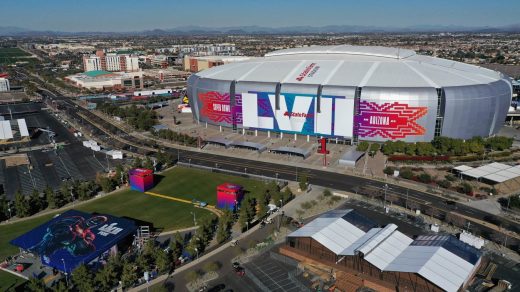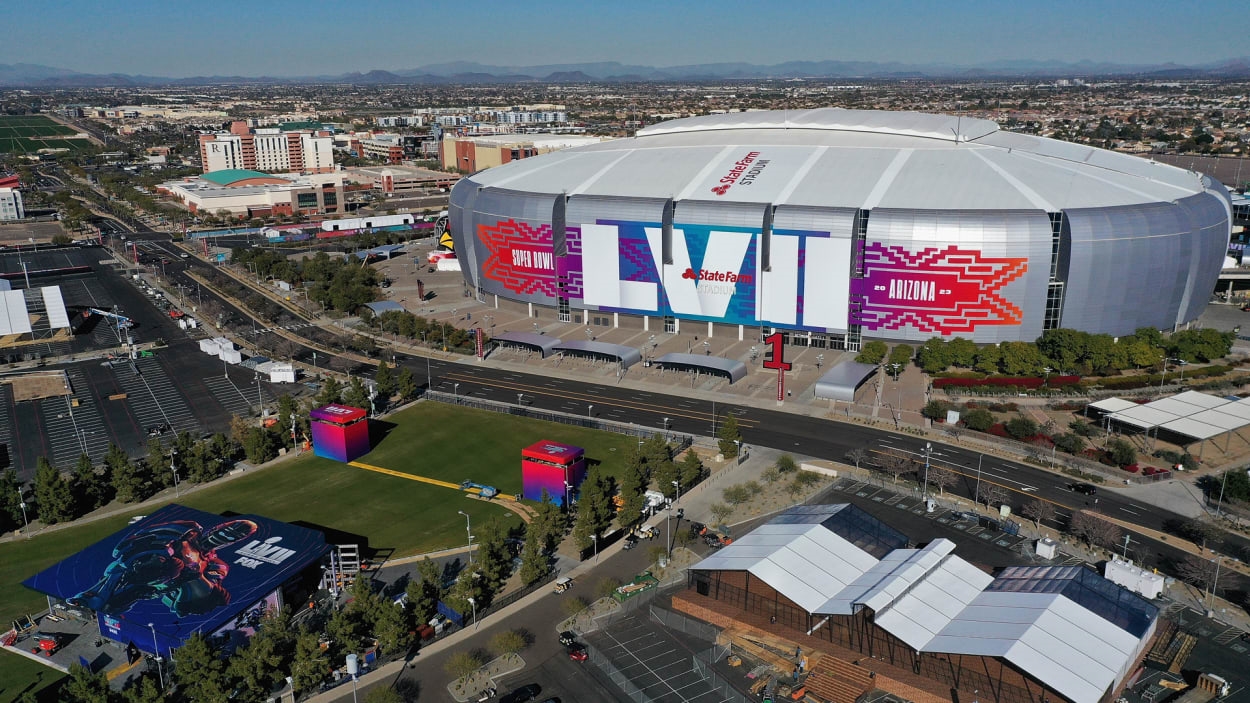Move over Patrick Mahomes and Jalen Hurts: The real Super Bowl MVP will be the high-powered stadium internet
On Sunday, nearly 64,000 people are expected to pack into State Farm Stadium in Glendale, Arizona, to watch as the Philadelphia Eagles and Kansas City Chiefs battle for the Lombardi Trophy. And while a matchup between the two of the league’s most explosive offenses could set some records, we’re just as (if not more) likely to see another record set that day: in data usage and network activity.
It’s Aaron Amendolia’s job to ensure that things run smoothly should that data spike be even bigger than expected. As Deputy CIO of the NFL, he oversees connectivity at the year’s biggest sporting event, ensuring not only that fans are able to post their selfies and livestreams, but that essential operations like mobile ticketing and cashless transactions run smoothly.
“Each year, every Super Bowl has set a new record for the amount of data transferred for a single-day sporting event,” he says.
Last year’s Super Bowl at SoFi Stadium in Los Angeles consumed 31.2 terabytes on its Wi-Fi network alone. That’s the equivalent of streaming one million movies simultaneously (and enough data to store the entire Library of Congress twice).
Prepping a Super Bowl stadium for such a dramatic spike in network activity starts long before the game. When a host venue is finally identified roughly three years in advance, they undergo an audit by the league to assess whether it meets the criteria necessary to handle the huge spike in connectivity demand. Inevitably, things like Wi-Fi capacity need to be changed, which is followed by a second audit. Among the items examined: the number of service lines and their capacity along with built-in redundancies.
The need for multiple backups is critical. Despite the careful preparation, there’s always something the NFL can’t plan for, whether it’s the data drain of tens of thousands of people livestreaming from their phones or a line that gets cut several states away.
“This is a global media event,” says Norman Rice, COO at Extreme Networks, the networking company that develops and manufactures network infrastructure equipment for large venues. “Everything about it is bigger and broader. With all of the people that are there, think about everything that takes place around it: ticketing, security . . . everything is bigger.”
The COVID effect
COVID really forced the Super Bowl to up its game technology-wise. The 2021 game in Tampa was the first to feature digital-only tickets as well as a cashless payment system, with vendors relying entirely on contactless payment methods.
“It pushed us into a business change, years in advance of when we were planning on making it,” says Amendolia. That meant substantially extending the footprint of network capability even beyond the entrance gates, to allow people to pull up their tickets as they approached the stadium.
Preparing for that broad coverage area means assembling representatives of every service provider into one command center during the game, where they analyze and monitor for any signs of a bottleneck, technical issue, or security threat.
Those threats are very real. Because the Super Bowl is such a high-profile event, Homeland Security assists in preparations each year. And beyond potential incidents on or around the stadium, there’s also the very real need to monitor the network.
“This event is a target if you want to make a statement as a nation state or bad actor,” says Amendolia. “Our network has to be ready to handle whatever is thrown at it from the outside. Given the capacity inside the stadium and the level this operates at, we have to be ready for everything.”
The Thursday before the game, the team gathers any form of technology that will use networking in the game, from the broadcaster’s equipment to the halftime show to the headsets and tablets used by coaches and turns them all on at once, using spectrum analysis to see if there are any unexpected effects.
Sharing information
That takes care of the known data consumers. When it comes to fans, the science is a bit less precise. Data consumption on an iPhone is different than it is on an Android, for example. And that’s something else the league and its partners have to be aware of.
“Norm and I are always monitoring what the ratio is of Android to iPhone,” says Amendolia. “We’re going to have different experiences based on those platforms. . . . And if something goes wrong, fans aren’t going to think it’s their device’s fault; they’re going to think the NFL didn’t have its act together.”
To prevent that, Extreme Networks works with other sporting leagues beyond the NFL during the off-season and is able to incorporate lessons learned from other high-profile events.
“We cross-pollinate what we learn,” says Rice. “When one sport isn’t in season, another is. There are things Major League Baseball does for the World Series that impact what the NFL does and vice versa. The goal is to have the best outcome and make sure everything is up and running.”
(14)



